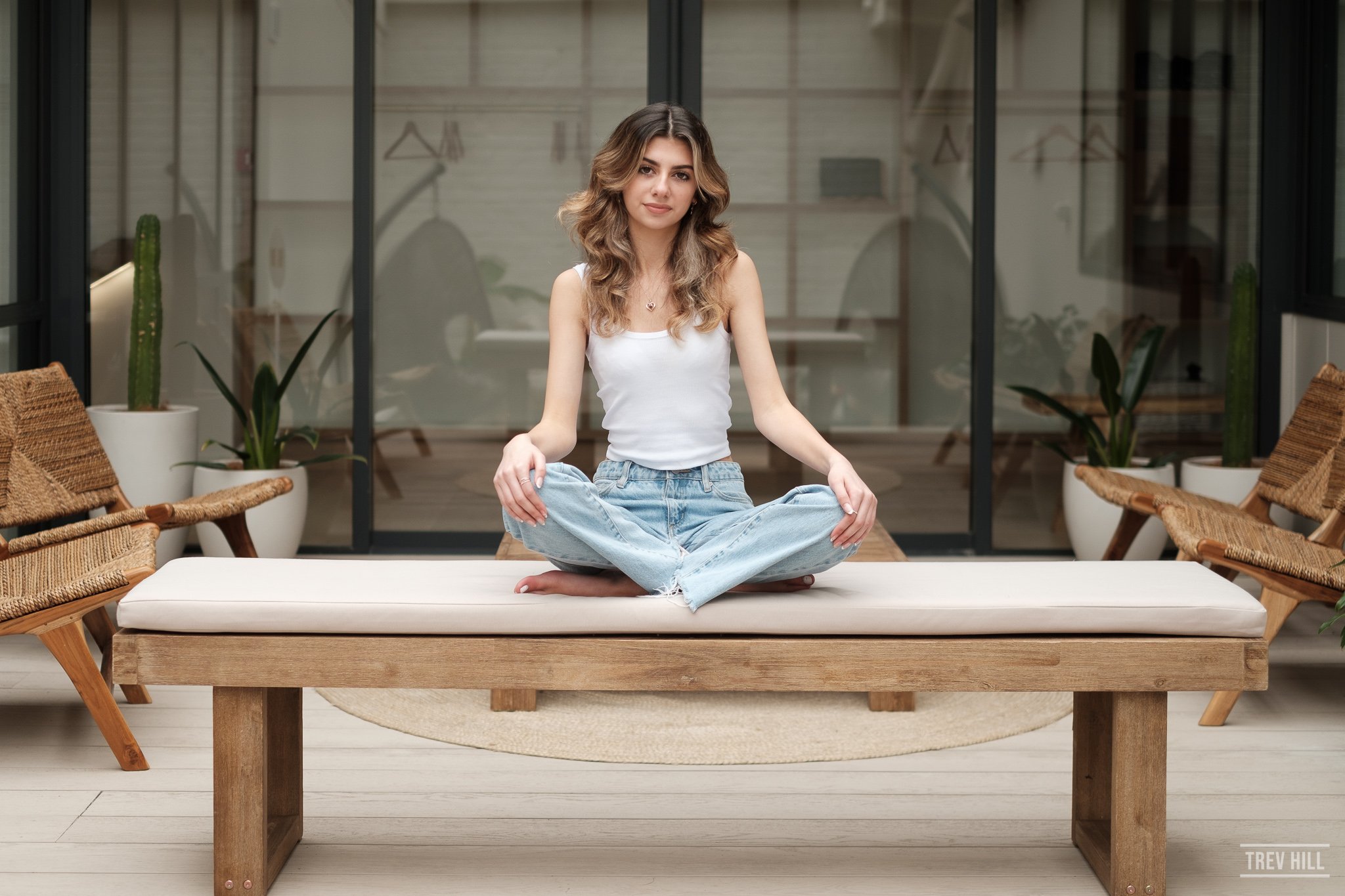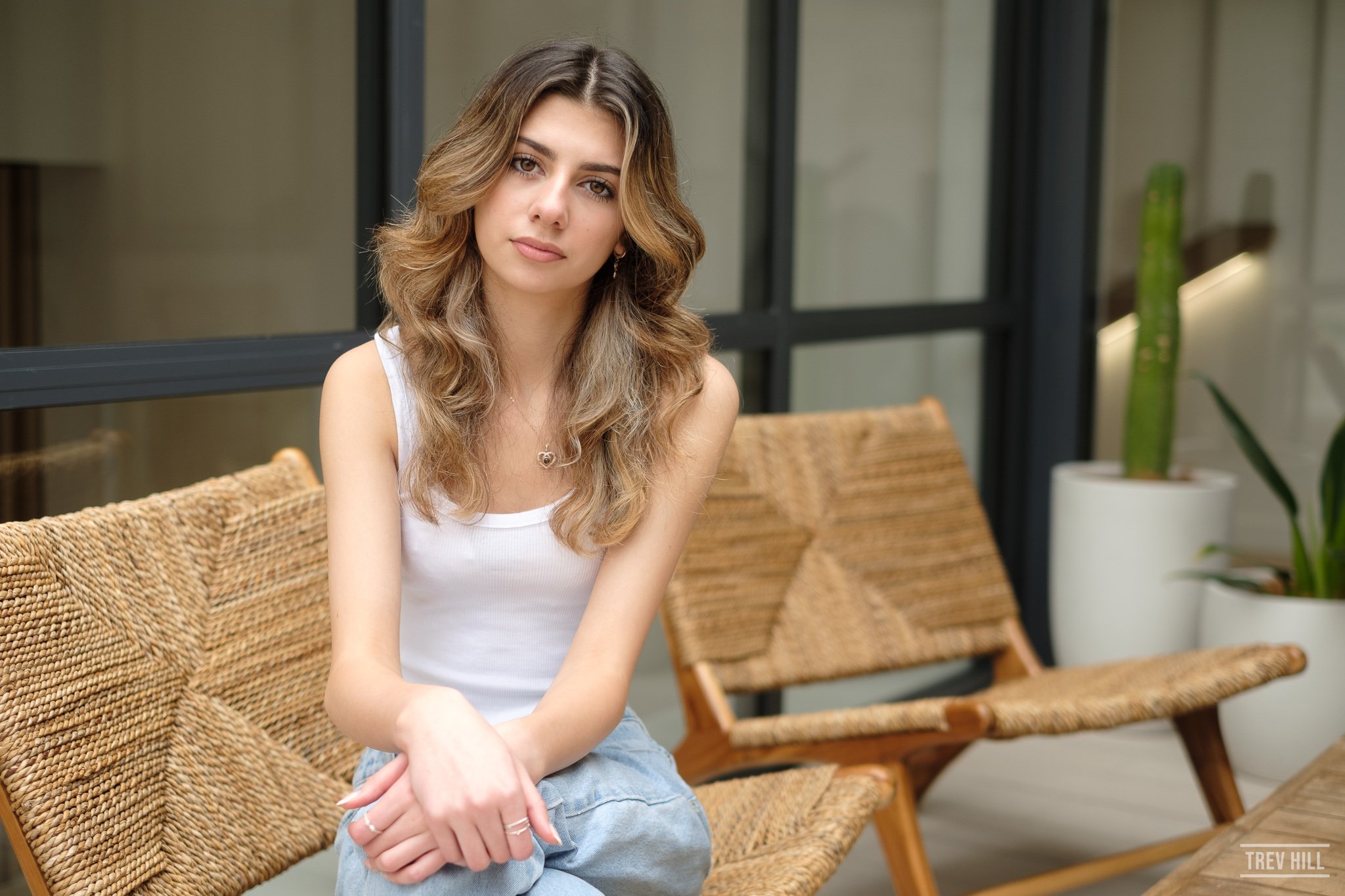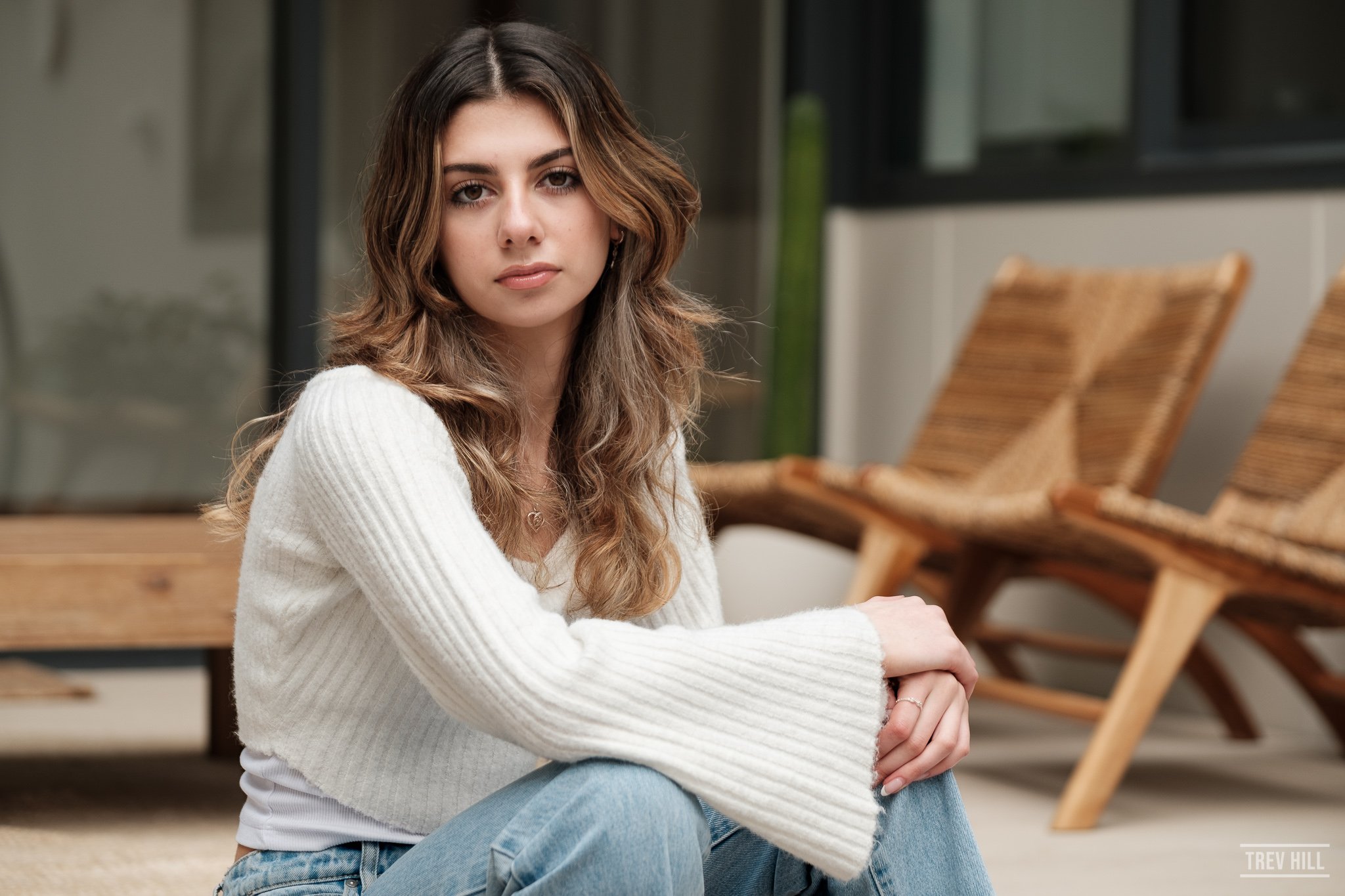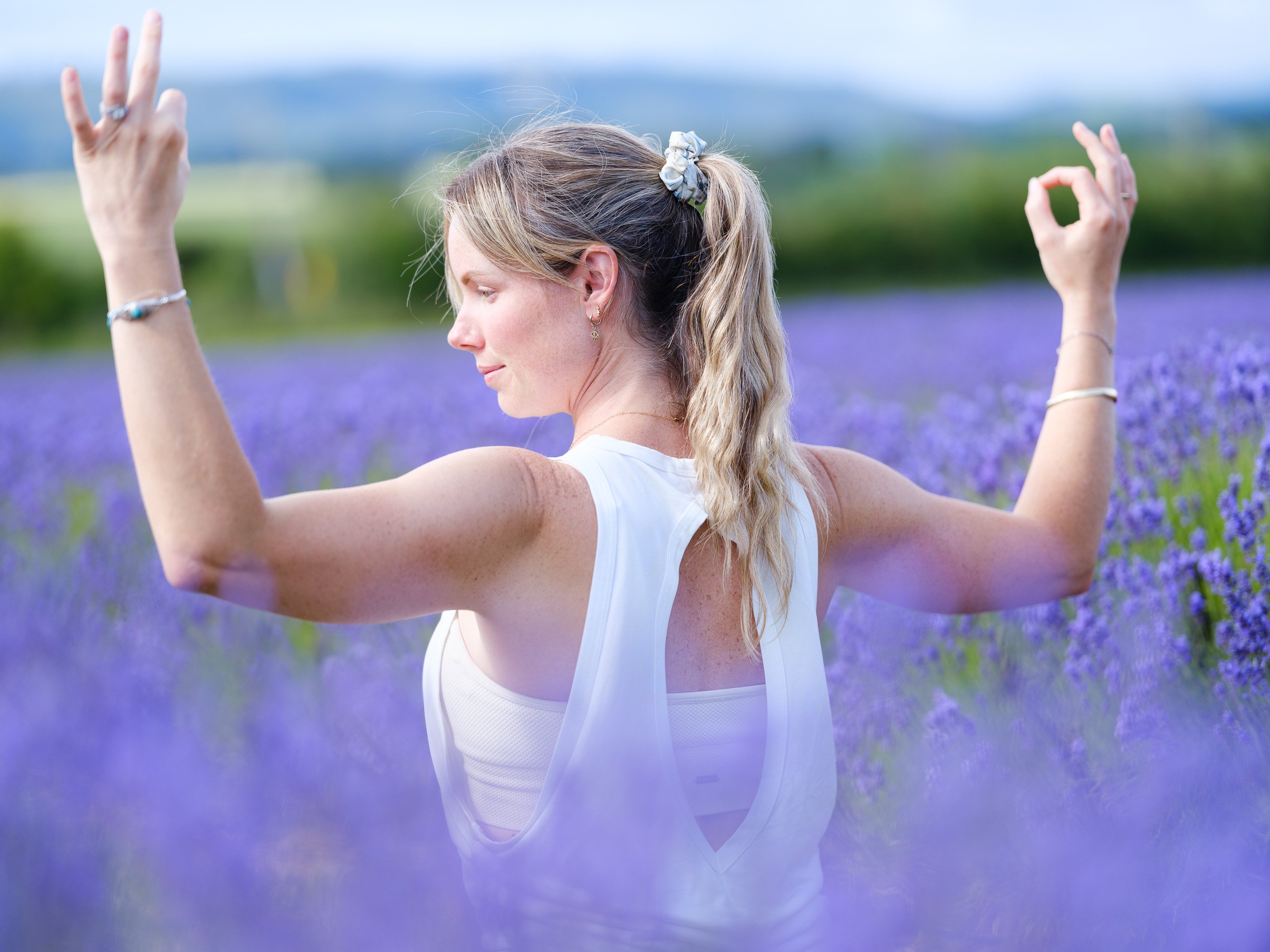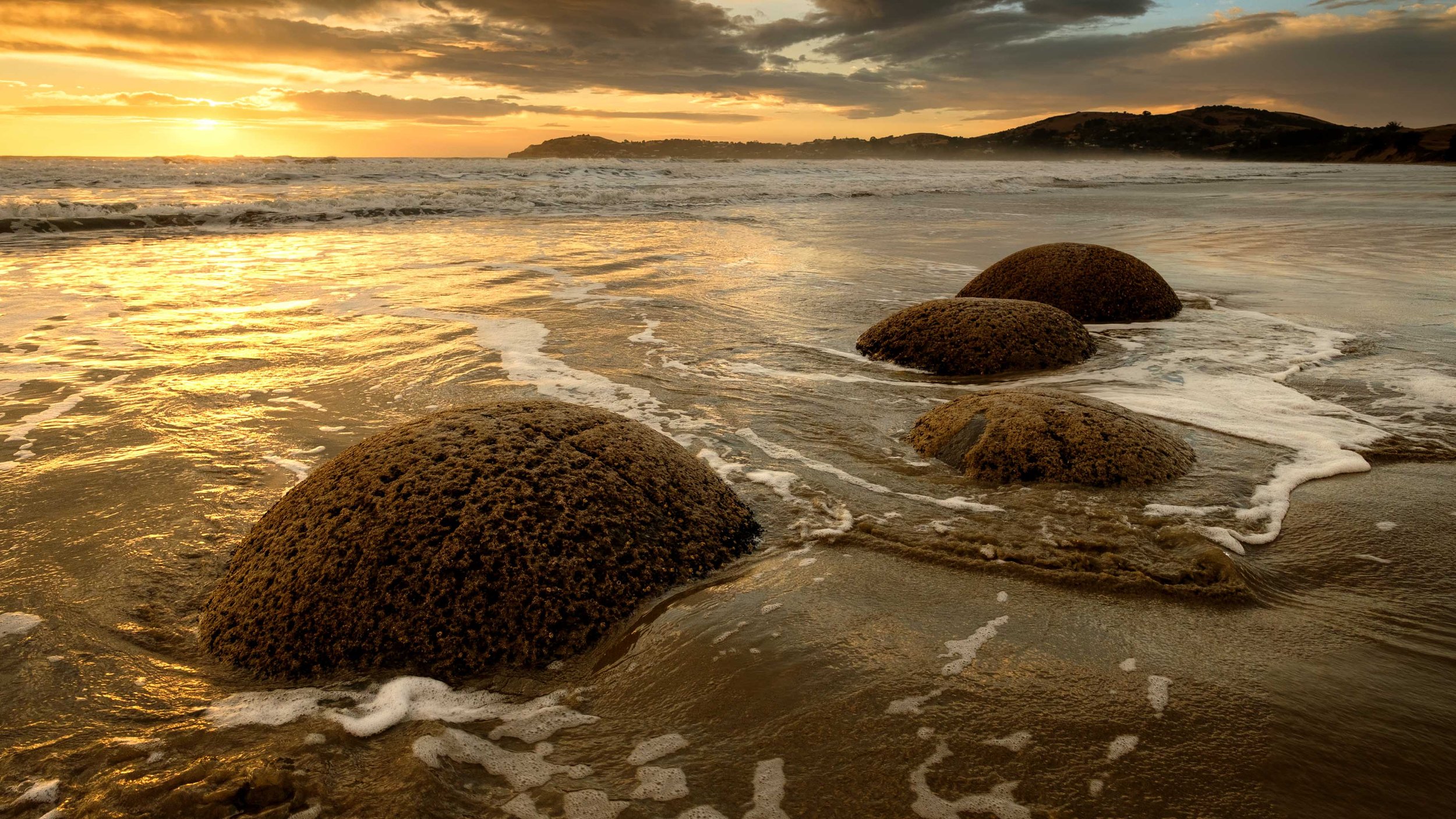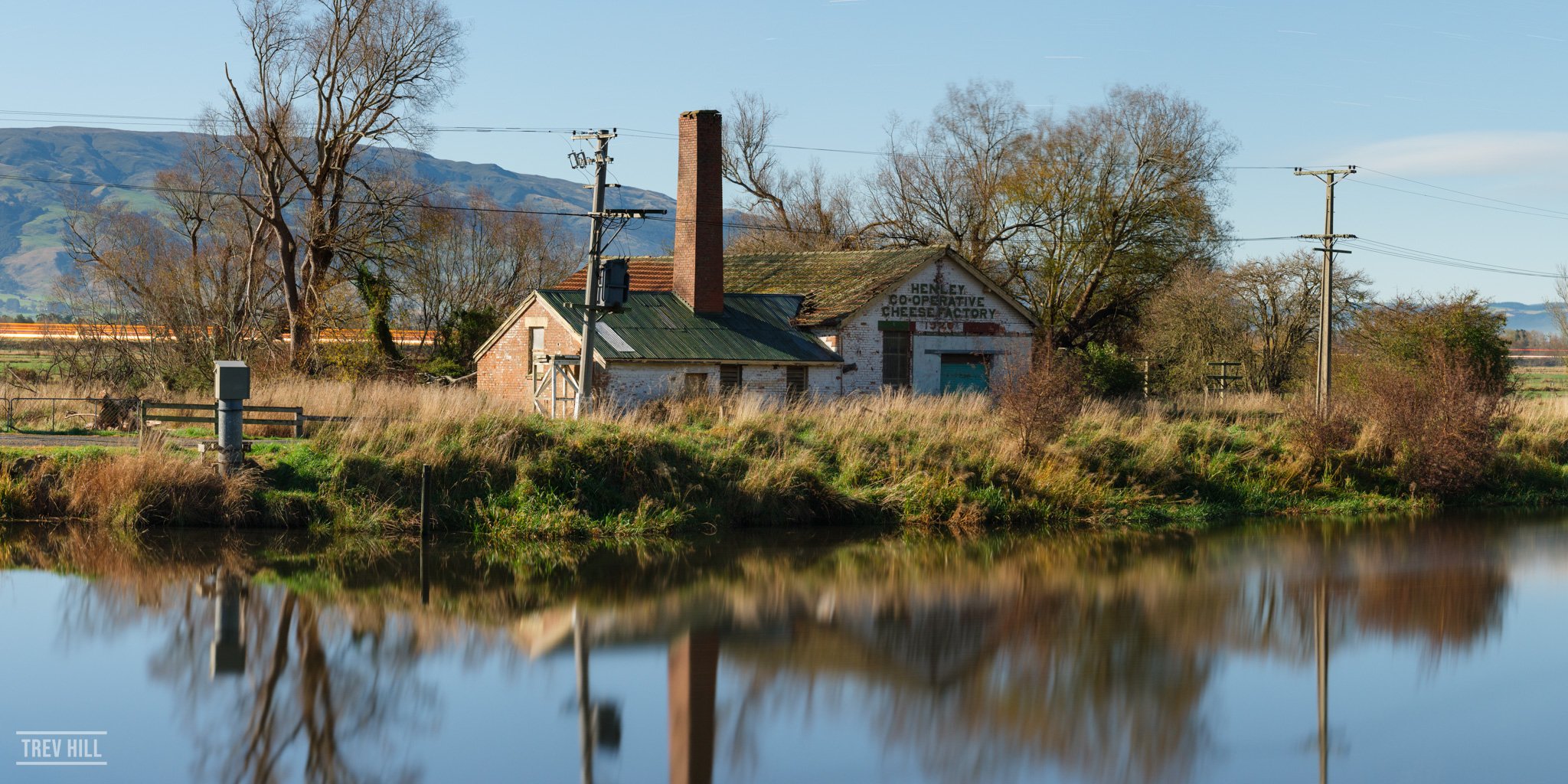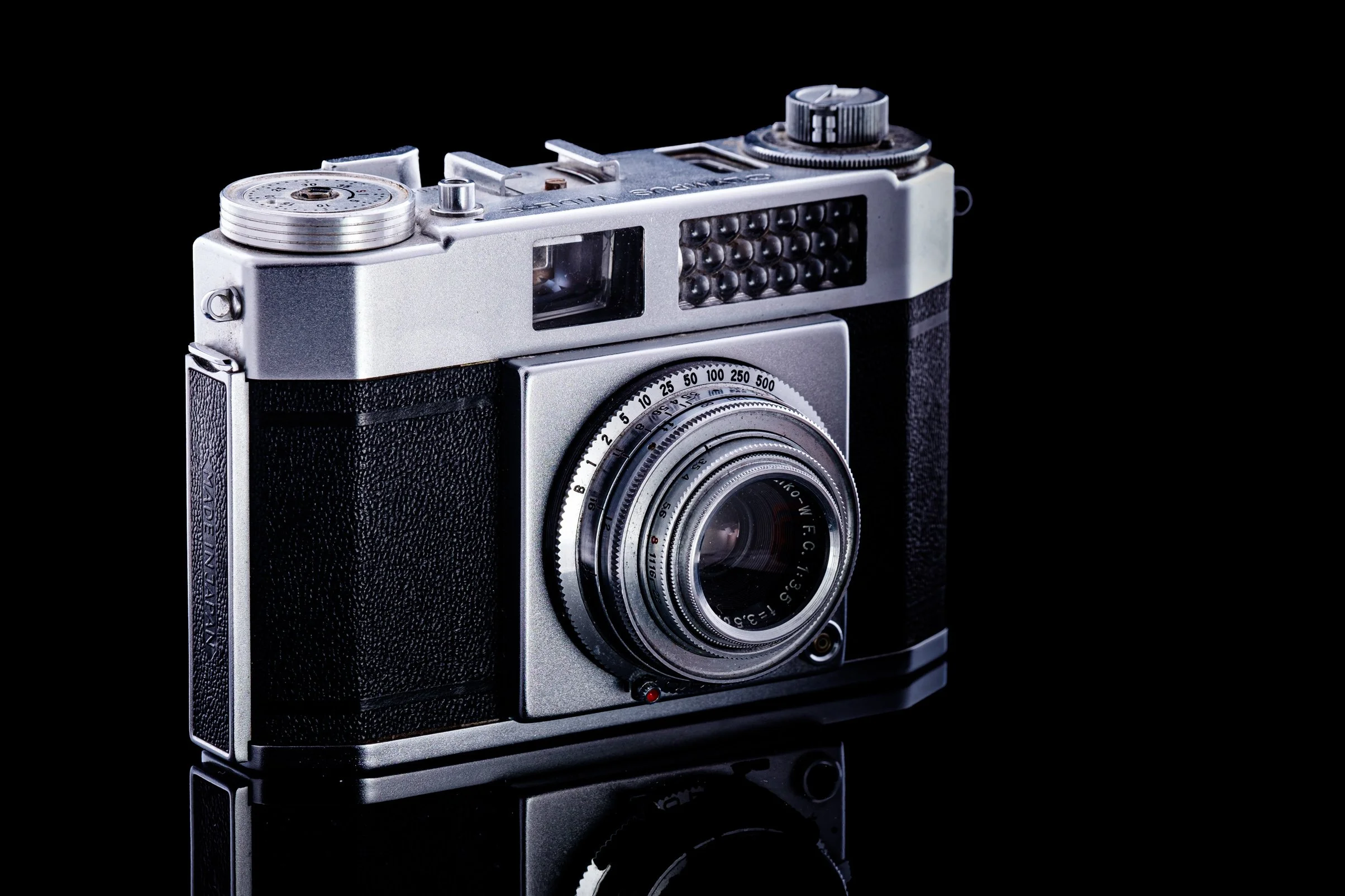Recently I photographed my teenage daughter Colbie to help build her modelling portfolio. I organised with one of my clients the use of their lovely business interior and coordinated with my girl a simple colour palette to compliment the environment we would use for the imagery.
I use both Fujifilm GFX and the Fujifilm X systems, but decided to roll with the X system and a combination of the XF 35mm 1.4 and XF 50 - 140mm 2.8 lenses.
The first scene we worked used a fabulous hanging chair for Colbie to lounge in. I used the XF 35mm here at f1.8 as the chair was ever so slightly rocking and wanted a faster shutter speed to keep subject sharpness.
Fujifilm XF 35mm 1.4 @ f1.8, Classic Chrome.
So I’m looking at these images on the back of my camera and thinking this looks really nice, but right at this moment I wasn’t thinking about any special ‘glow’ quality. The next scene within the space was the back wall with a georgeous reclining couch, lovely palm pot plant, and coffee table stump. Colbie did a great job with her pose, and the images on the back of the camera looked fab to me, but I still wasn’t getting a ‘glow’ vibe.
Fufifilm XF 35mm 1.4 @ f2, Classic Chrome.
The next shot is based on a yoga pose, and out of habit I had the 35mm at f2, as that’s where I usually set the aperture, again not really thinking of any special glow exhibited by the image here, as this is more of a pulled back environmental image.
Fujifilm XF 35mm 1.4 @ f2. Classic Chrome.
But then as I took more tightly cropped images, here is where I started to notice a lovely softness to my daughters skin, dare I say it, a hint of a glow. The first image is in Classic Chrome, so a little desaturated, but in the following 2 images I used the ProNeg-Hi simulation and the warmer skin tones I think exude a bit of a glow.
Fujifilm XF 35mm 1.4 @ f1.8
Fujifilm XF 35mm 1.4 @ f1.8, Pro-Neg Hi
Fujifilm XF 35mm 1.4 @ f2, Pro-Neg Hi
So right about now, you are either agreeing with me or laughing at me, as you can or can’t see a glow… You know what, you might be right and I might just be fooling myself. However, let’s finish off the shoot.
Next I stood Colbie up and took out the XF 50-140mm f2.8. Shooting wide open I took a series of images, again they look great, but looking at them now, I don’t think they have the same ‘glow.’
Fujifilm XF 50-140mm, @ f2.8, Classic Chrome
Fujifilm XF 50-140mm @f2.8, Classic Chrome
Back with the 35mm on the camera I took some waist high up shots, but from this sort of distance I didn’t really see anything other than good natural light on my subject.
Fujifilm XF 35mm 1.4 @ f1.8, Classic Chrome
In the next image I threw back on the XF 50-140mm and now looking at this image of my daughter, am I seeing a glow on the XF 50-140mm lens? Maybe it’s just the lovely natural light we are using. Now I’m confused, everything is starting to glow.
Fujifilm XF 50-140mm f2.8 @3.2, Classic Chrome
This time we moved locations to a space right next to this room, it allowed all the natural light from this space to filter in from a large side window above. Using the XF 35mm I utilised the lovely couch for a picture with Colbie.
Fujifilm XF 35mm 1.4 @ f2, Classic Chrome
Fujifilm XF 50-140mm @ f2.8, Classic Chrome
One last photo above using the XF 50-140mm. I look back on these images and are completely undecided on whether I am just seeing things or there is really a glow to this lens, either way, the Fujifilm XF 35mm 1.4 is a gem for stationery subject photography, and will always have a place in my tool bag.
Photographer: Trev Hil - Model: Colbie Hil. - Location: Well + Being, Dunedin.



